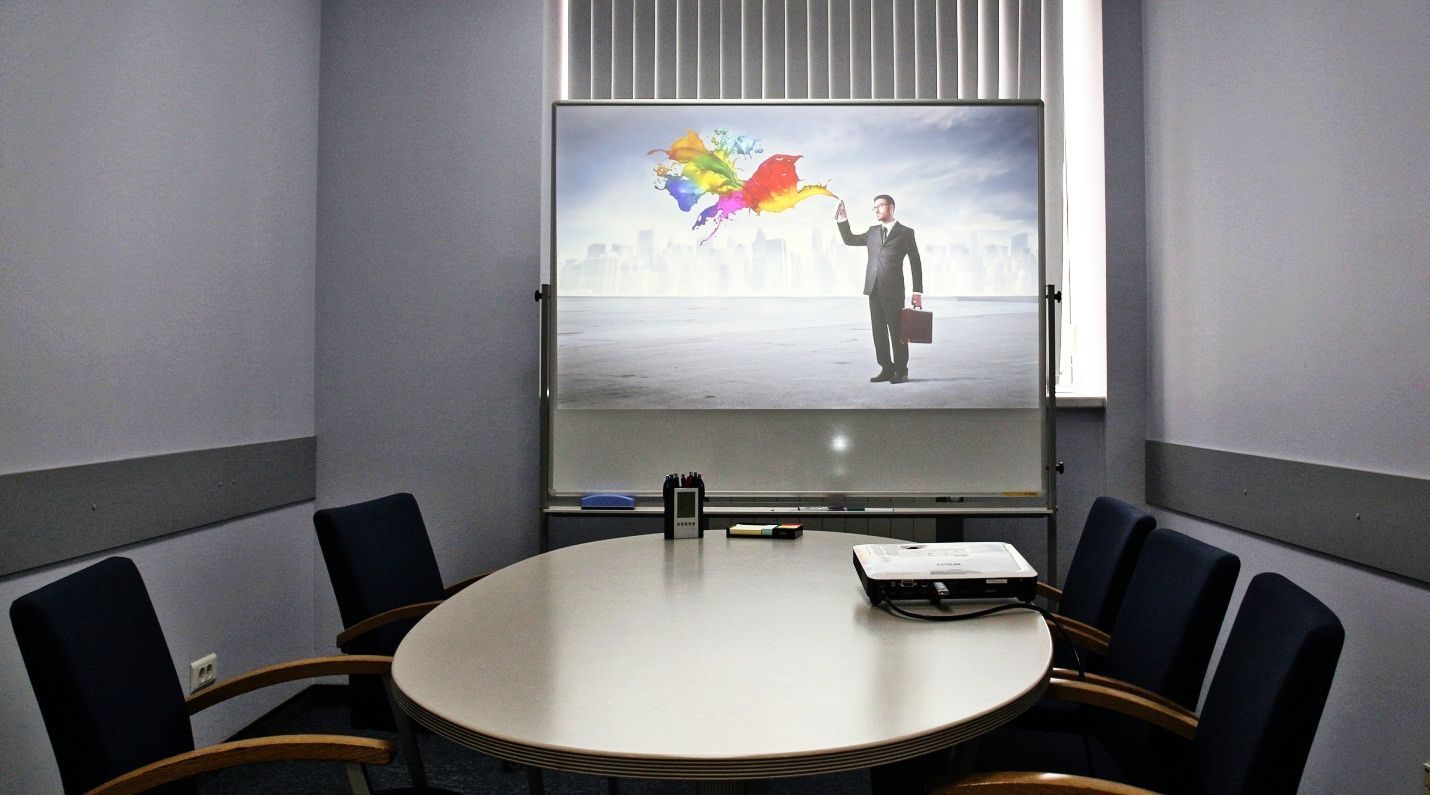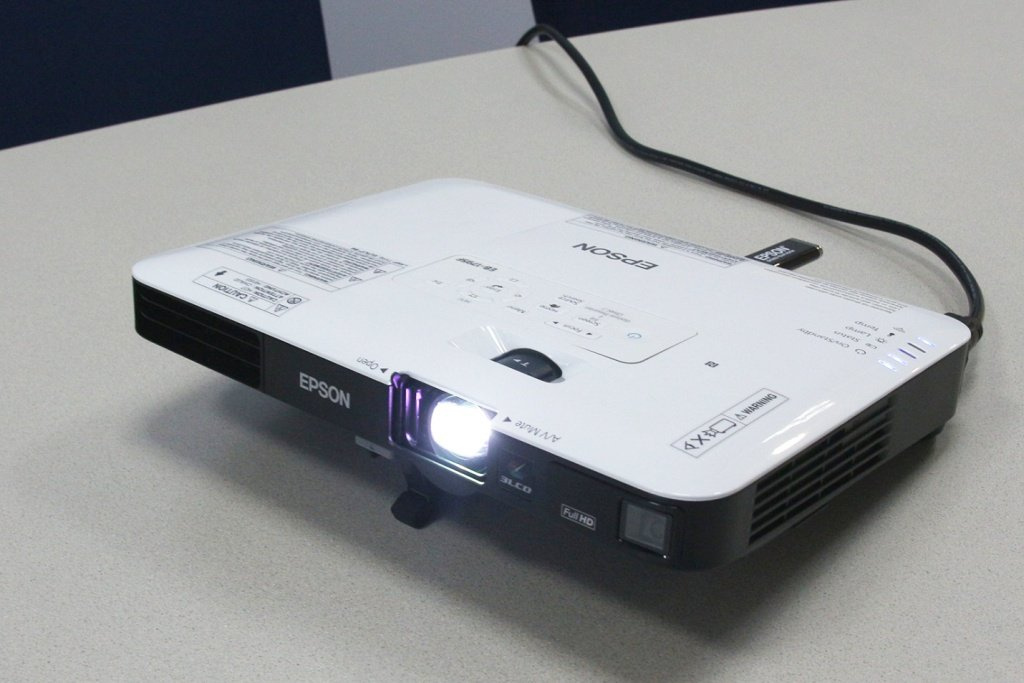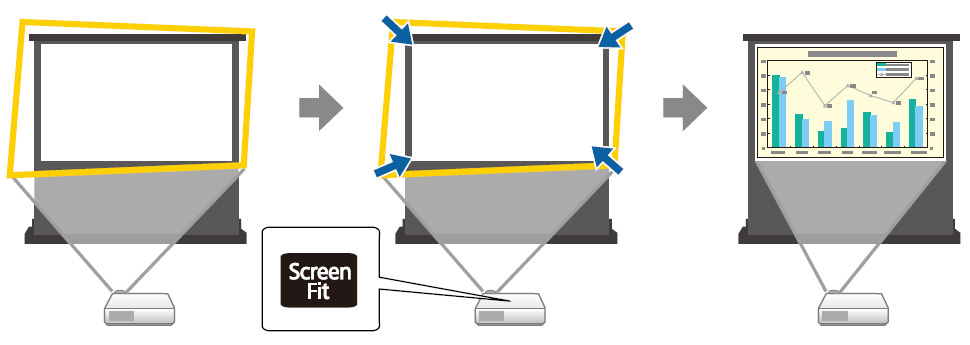Faithful companion businessman. Epson Mobile Projector Series 17

Universal and mobile projectors are in demand in the business environment due to the combination of portability and the ability to get a large diagonal image. One of the areas of their application is field presentations and business trips.
The good news is that office (or “universal”) projectors have a good balance between image quality and portability. The second good news is that the Epson projector range includes models designed specifically for mobile use - the so-called “17th series”, which includes Epson EB-1780W , Epson EB-1781W , Epson projectors. EB-1795F (the letter “W” corresponds to a resolution of 1280 × 800, “F” - 1920 × 1080). We call them “ultraportable” among themselves.
Today we will consider them, and also we will tell about their main difference from "pocket" or pico-projectors.
What is required from the projector
The projector, claiming the role of a reliable satellite in a business trip, are more demanding than the usual. A mobile projector should be lighter and more compact, easier to install, and easily and quickly connect to the most diverse devices.
In this case, you will surely give presentations in quite ordinary lighting conditions, that is, with medium or even bright artificial light (and this, by the way, up to 500 lux of illumination on the working surface). Therefore, it is quite natural that the mobile projector is not inferior to the usual office in image quality, and this will require the same high brightness.
And all this needs to fit in the form factor ... Well, a laptop , for example. So, Epson 17 series projectors meet all the requirements listed above.
Let's briefly go over the main ones.

Epson EB-1795F Ultraportable Projector
Brightness and portability
The 214 watt lamp is even more than the standard 190-200 watt lamps traditionally used in office projectors. Epson engineers surpassed themselves, managing to place such a powerful lamp in a slim package, because the use of powerful UHP lamps in the EB-1700 series projectors made it possible to achieve a luminous flux of more than 3000 lumens in both white and colors . There are no compromises and “lumpy” lumens, as is often the case with other ultracompactors - we all have to be honest.
The lamp life is 4000 hours at full load and 7000 in economy mode, where the brightness drops to 1900 lumens, which is also very bright. This corresponds to 4 years and 7 years of operation on working days, 4 hours a day, after which you simply change the lamp and continue working.

Classic Epson EB-U32 and slim Epson EB-1795F
Epson EB-1700 series projectors cannot be called pocket-sized, but their advantage in compactness and lightness in comparison with conventional projectors is immediately noticeable. The height of the case is 5 cm, the width and depth are the same as for A4 paper (approximately 29 cm x 21 cm). With a thin case, such dimensions make carrying the projector in a bag really easy and convenient (again, a comparison with a laptop suggests itself). The difference is not only in size, but also in weight - 1.8 kg instead of 2.6 kg in classic Epson models.
Comparison with pocket LED (LED) projectors
Anticipating questions about another class of supercompact or even “pocket-sized” projectors, we immediately identify the most important difference between them and our mobile projectors. For their compactness, "pocket" or pico-projectors pay with much lower brightness indices. Even the officially declared (c) brightness levels of such projectors in the region of 500-1000 lumens correspond to what is expected from home projectors in complete darkness , in the mode of the lowest brightness and the best color rendition. Independent reviews of LED projectors often indicate that the claimed brightness is not achieved in practice (roughly speaking, the lumen in many such products are declared "corn" and have nothing to do with the real state of affairs).
But back to the topic of conversation. We have already discussed why, for projecting high-quality images in an office environment, the light flux of the projector should be around 3000 lumens . Failure to achieve this level of productivity means a voluntary "transition to the zone of dusk." A low-brightness projector will not be able to show the same juicy, legible and contrast image in a lit room, it will not be able to work with lighting levels and screen diagonals that the projector can easily handle with a brightness of 3000 lumens.

Pictures showing the difference between images of different brightness in an illuminated office meeting room (400 ~ 500 lux, 80 inches diagonal)
In addition, to achieve greater compactness, many LED projectors use a diagonal matrix that does not allow one-to-one, without additional transformations and loss of quality, to display the material even in their “native” resolution. Often this is not even reported. But if the matrix is not diagonal, then this will certainly be reported as a “trick”.
You just do not think - in fact, we do not have anything against the LED pico projectors. They have their own niche. But, as in boxing, one should not force athletes of the super-easiest category to fight against super heavyweight. And in the case of projectors, the weight category is primarily determined by the brightness, especially when it comes to operating the device in a well-lit room.
Installation and projection
All models of the 17th series, except for Epson EB-1780W, have the function “Screen Fit”, which allows to recognize the shape and borders of the screen and instantly adjust the image under it.

They also have automatic vertical and horizontal keystone correction - whatever the vertical and horizontal angle the projector is installed on, the shape of the screen will be automatically adjusted. In addition, all models except Epson EB-1780W support autofocus. These pleasant little things allow you to not waste time on manual configuration and make installation of the projector, without exaggeration, instant.
The convenience of installation is also facilitated by a rather small minimum distance to the screen - it corresponds to the width of the screen (i.e., from a meter we have a screen one meter wide, for example).
The “Gesture Presenter” function (in all but Epson EB-1780W), the same “Presentation by gestures” allows you to display the slide browsing buttons at the edge of the screen and, “touching” with their fingers directly on the screen (without any pen or other device) flip through slides, images in a slideshow or document pages. Thus, it is possible to conduct a typical presentation using a projector, as if it were interactive. You can see how the Screen Fit and Gesture Presenter functions work on this video from Projectorworld.ru (we also recommend their review of Epson EB-1795F ):
Connection
Epson EB-1780W, Epson EB-1781W, Epson EB-1785W and Epson EB-1795F replaced the old models of the 17th series, which were with us for so long that they did not even have the support of MHL . In the new generation, MHL is supported, and now you can connect your MHL-compatible mobile device by wired method to the HDMI port of the projector and duplicate the screen while simultaneously charging the device.

All of these models have a built-in WiFi adapter that allows you to connect to the projector either directly or through the organization’s network. Up to four devices can be displayed on the projector screen simultaneously. In this case, you can connect to four projectors directly via the network!
Connection is made using the EasyMP MultiPC Projection software (for PC) and iProjection (for Android and iOS devices).
Epson EB-1785W and Epson EB-1795F also support Miracast, allowing you to duplicate the screen of a mobile device over a wireless network.
The WiFi connection process was also simplified - the user can quickly connect the smartphone to the projector by scanning the QR code from the screen, or by bringing an Android smartphone (NFC support required) to the projector NFC tag (supported in all but Epson EB-1780W).
The Split Screen feature is also useful and allows you to display two different signal sources side by side (except for the smaller Epson EB-1780W).
In addition, the 17-series projectors allow you to view JPEG images and PDF files from USB-drives. The presenter also has a traditional USB Display-USB connection (USB Type B connector), which allows you to transfer image and sound from the computer to the projector and control the demonstration from the projector’s console or the Gesture Presenter function described above.

Instead of conclusion
You can talk about the features of Epson EB-1700 series projectors for quite a while. In our opinion, the lineup turned out to be very successful, our representatives and employees themselves “ride” with such meetings. Who knows, maybe you or the head of your organization will find this product interesting.
Traditionally, we thank for your attention and are ready to answer questions!
All Articles